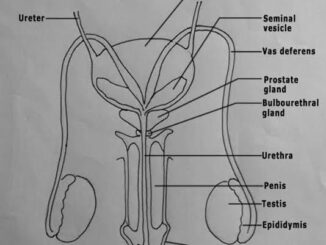Welcome to “Naijaclass Academy” For Neco 2024 Geography – Human and Regional Answer (June/July Exam)
Friday, 5th July 2024
Geography – Human and Regional (Essay) 10:00am – 12:00noon
——————————
GEOGRAPHY ANSWERS
(1a)
(i) Agricultural productivity: The Nile’s annual flooding made the valley suitable for agriculture, allowing for high food production and supporting a large population.
(ii) Water security: The Nile provided a reliable source of water for drinking, irrigation, and other uses, attracting people to settle in the valley.
(iii) Strategic location: The Nile Valley’s position between Africa, Asia, and Europe made it a hub for trade and cultural exchange, drawing people to the region.
(1b)
(i) Resource depletion: Over-population leads to increased consumption of resources, causing scarcity and depletion of essential resources like food, water, and energy.
(ii) Unemployment and poverty: A large population can lead to high levels of unemployment and poverty, as resources and opportunities become scarce.
(iii) Environmental degradation: Over-population puts pressure on the environment, leading to pollution, deforestation, and loss of biodiversity.
(iv) Strain on infrastructure: Over-population can lead to inadequate housing, transportation, and public services, reducing the overall quality of life.
(1c)
(i) Urban planning and infrastructure development: Implementing efficient urban planning strategies and investing in infrastructure development can help accommodate growing populations, reduce strain on resources, and improve living standards.
(ii) Investing in technology and innovation: Investing in technological advancements and innovative solutions can help address the challenges of over-population, such as developing sustainable energy sources, improving agricultural productivity, and creating more efficient resource management systems.
=================================================
(2a)
(i) Cultural homogenization: Tourism can lead to the loss of local culture and traditions as global brands and chain hotels replace local businesses and authentic experiences. This can result in the erasure of unique cultural identities and the commodification of cultural heritage.
(ii) Social displacement: Tourism development can displace local communities, especially in areas with high demand for accommodation and infrastructure. This can lead to the displacement of long-term residents, loss of community cohesion, and increased housing costs.
(iii) Economic inequality: Tourism can exacerbate economic inequality as wealth generated by tourism often benefits external investors rather than local communities. This can lead to a lack of economic benefits for local residents and a widening of the income gap.
(iv) Environmental degradation: Tourism can lead to environmental degradation, such as pollution, over-development, and resource depletion, especially in sensitive ecosystems. This can result in the destruction of natural habitats, loss of biodiversity, and decreased environmental quality.
(2b)
(i) Sustainable tourism practices: Encourage responsible travel behaviors, such as reducing waste, respecting local customs, and supporting eco-friendly accommodations. This can include measures like recycling programs, energy-efficient practices, and cultural sensitivity training.
(ii) Community-based tourism: Empower local communities to manage and benefit from tourism development, ensuring that profits stay within the community. This can involve community-led tourism initiatives, local ownership of tourism businesses, and community benefit sharing.
(iii) Regulatory frameworks: Establish and enforce regulations to protect the environment, preserve cultural heritage, and ensure fair labor practices. This can include laws protecting natural resources, cultural heritage sites, and workers’ rights.
(iv) Tourism education and awareness: Educate tourists, tour operators, and local communities about the impacts of tourism and promote responsible tourism practices. This can involve awareness campaigns, training programs, and community engagement initiatives.
===================================
(3a)
(i) Lack of infrastructure: Inadequate transportation networks, limited access to electricity and water, and poor telecommunications infrastructure make it difficult to establish and operate industries. This leads to increased production costs, reduced efficiency, and decreased competitiveness.
(ii) Limited access to finance: High interest rates, inadequate financing options, and lack of venture capital make it challenging for industries to access the capital needed to invest in equipment, technology, and human resources. This constrains their ability to grow and compete globally.
(iii) Dependence on primary commodities: Many African countries rely heavily on exporting raw materials, such as oil, minerals, and agricultural products, making them vulnerable to fluctuations in global commodity prices. This exposes them to external shocks, limiting their ability to industrialize and diversify their economies.
(iv) Brain drain and skills gap: Many African countries face a shortage of skilled workers, as talented individuals emigrate to other regions in search of better opportunities. This deprives industries of the expertise and knowledge needed to drive innovation, productivity, and growth.
(3b)
(i) Invest in infrastructure development: Governments and private investors should prioritize building modern transportation networks (roads, ports, airports), increasing access to electricity and water, and improving telecommunications infrastructure. This will reduce production costs, increase efficiency, and enhance competitiveness.
(ii) Develop financing options: Governments and financial institutions should create financing options tailored to the needs of industries, such as low-interest loans, venture capital funds, and private equity investments. This will enable industries to access the capital needed to invest in equipment, technology, and human resources.
(iii) Diversify economies: Countries should diversify their economies by developing value-added industries that process raw materials, reducing dependence on primary commodities. This can include industries like manufacturing, agro-processing, and services, which can create jobs, increase exports, and drive growth.
(iv) Develop skills and retain talent: Governments and industries should invest in vocational training and education programs to develop the skills of local workers and create opportunities to retain talented individuals. This can include partnerships with foreign universities, training institutes, and industries to transfer knowledge and expertise.
==========================================
SECTION B (ANSWER 2 ONLY)
GEOGRAPHY ANSWERS
4a) PICK ANY THREE
The distribution of settlements in Nigeria is influenced by various factors, which include:
1.Geographical Features: The physical landscape of Nigeria, including its rivers, mountains, and plains, plays a significant role. Areas with fertile soil, such as the Niger Delta and the Benue Valley, tend to have denser populations due to their suitability for agriculture. Conversely, mountainous regions and areas with poor soil quality are less densely populated.
2.Climate: The climate varies significantly across Nigeria, from the humid tropical climate in the south to the arid climate in the north. The southern regions, with more rainfall and a longer growing season, support dense agricultural settlements. In contrast, the drier northern regions support pastoralism and are less densely populated.
3.Economic Opportunities: Urban areas and regions with significant economic activities, such as Lagos, Abuja, and Port Harcourt, attract more people due to job opportunities and better living standards. Industrialization, trade, and availability of services in these cities drive migration and settlement.
4.Historical and Cultural Factors: Historical events and cultural practices influence settlement patterns. Certain areas have historically been centers of administration, trade, or religion, leading to higher population concentrations. Cultural practices, such as land inheritance and ethnic group preferences, also affect where people live.
5.Infrastructure and Services: The availability of infrastructure like roads, electricity, water supply, and educational and health services attracts people to certain areas. Regions with better infrastructure and public services tend to have higher population densities compared to those with limited access to these amenities.
==================================
(6a)
(i)Promotion of Economic Integration: ECOWAS aims to promote economic cooperation and integration among its member states to foster economic development and stability in the region. This includes the establishment of a common market, customs union, and monetary union.
(ii)Peace and Security: Another objective of ECOWAS is to promote peace, security, and stability within the West African region. The organization works towards resolving conflicts, preventing crises, and promoting democratic governance to ensure peace and security for its member states.
(iii)Promotion of Development: ECOWAS seeks to enhance the economic development and social progress of its member states. This includes initiatives to reduce poverty, improve infrastructure, and promote sustainable development in the region.
(6b)
(i)Political instability and conflicts in some member states, which divert resources and attention away from economic development and integration efforts.
(ii)Lack of effective implementation and enforcement of ECOWAS policies and decisions, due to inadequate institutional capacity and limited resources.
(6c)
(i)Strengthening of ECOWAS’ institutional capacity, including the development of a more robust secretariat and more effective decision-making processes, to enhance implementation and enforcement of policies.
(ii)Increased investment in conflict prevention and resolution mechanisms, including mediation, arbitration, and peacekeeping capabilities, to address political instability and conflicts in member states.






HEY AM LOOKING FOR GEOGRAPHY NECO HUMAN AND REGIONAL
Same here
How can I join this group
Am looking for geography answer
yes
Looking for answer
HEY AM LOOKING FOR GEOGRAPHY NECO HUMAN AND REGIONAL
Same here
How can I join this group
Am looking for geography answer
yes
Looking for answer
Hi looking for it also
Same here
Hi looking for it also
Same here
I need neco 2024 essay-human and regional geography
Please help me get the best answers
I need neco 2024 essay-human and regional geography
Please help me get the best answers
Human and regional geography
I need answer
Human and regional geography
I need answer
Human and regional geography pin
Thanks for your help
Pin abeg
neco answer ofhuman and regional geography
Human and regional geography pin
Thanks for your help
Pin abeg
neco answer ofhuman and regional geography
Hello I need your help
Hello I need your help
hey am looking for geography NECO Human and Reg
hey am looking for geography NECO Human and Reg
Am looking for human geography
Am looking for human geography
I need human regional geography question and answers
I need human regional geography question and answers
neco suresanswers
neco suresanswers
PLS HELP
PLS HELP
I need geography essay
I need geography essay
I need geography human and regional essay answers
I need geography human and regional essay answers
Please help me get the best answers 2024 Neco answers for human regional geography
Please help me get the best answers 2024 Neco answers for human regional geography
Have sent card for literature since friday why not sending me the pin now
Have sent card for literature since friday why not sending me the pin now